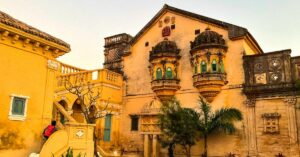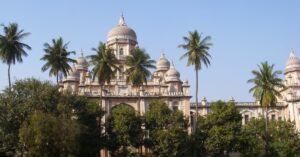Hindu Pashtuns: How One Granddaughter Uncovered India’s Forgotten Links to Afghanistan
A chance encounter in college would send Shilpi Batra on a nine year adventure, from the lanes of Jaipur to the far reaches of Balochistan.
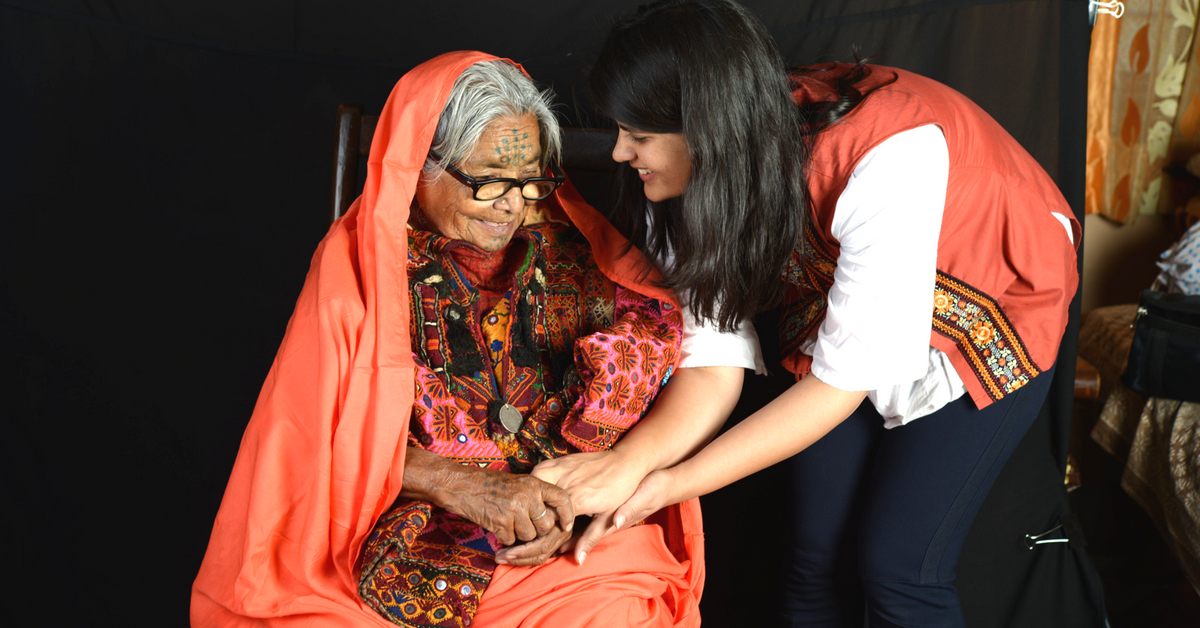
Partition remains a painful memory for many communities across both sides of the border. Many families had their entire lives uprooted even though they had no stake in a decision politicians and officials took over the course of months.
Imagine the fate of the Pashtun Hindu community who once resided in the Quetta, Loralai, Bori and Maikhter areas of Balochistan, and had to endure partition twice over.
The first time was in 1893, when the British imposed the Durand Line. This, all of a sudden, consigned them to modern-day Pakistan while separating them from their Kakari tribal brethren on the Afghan side of the border.
Once again in 1947, they were forced out of their homes overnight.
It’s nearly impossible to understand the socio-political dynamics of the Indian subcontinent without understanding this seminal event. Amidst all the pain, loss and endless killing, one positive thing to come out are the stories of people on either side of the border retracing their roots, families and identity.
This is precisely why independent filmmaker Shilpi Batra Adwani’s documentary titled ‘Sheenkhalai- The Blue skin’, which traces her roots as a Pashtun Hindu woman, is so important.
“The intention of this film is to give a voice and space to my community which has long been restricted,” says Shilpi, speaking to The Better India.
Researched and filmed over the course of nearly nine years, she took the painstaking trouble of finding many members of her community spread across the world and documenting their stories.
Backed by a grant from the India-Afghanistan Foundation, Shilpi and her team have shot this documentary in parts of Afghanistan, Quetta and Loralai in Pakistan, New Delhi, Chittorgarh, Punjab, Uniara, Tonk, Jaipur and even Washington DC.
However, it was an unforeseen event in college which triggered this remarkable journey in search of her roots.
“I was unaware of my identity as a Hindu Pashtun for the longest time. In Indian society, people are categorised on the basis of their caste and religion very early. To somehow adhere to the mainstream brackets of caste and religion my ancestors identified themselves as Punjabis. I grew up thinking that I was a Punjabi,” says Shilpi.

However, all that changed when she was studying for her Masters in Convergent Journalism from Jamia Millia Islamia in Delhi in 2009.
“There I met some students from Afghanistan, who were speaking a language I was familiar with, Pashto. I went back, dug deep into my familial history and then it dawned upon me that my ancestors were Hindus forced to flee Quetta in 1947 during Partition to avoid a massacre in that region. They were a large bunch of people who were displaced, settled in Hyderabad (Sindh Province, Pakistan) for two years and subsequently sent to Deoli in Rajasthan.
The idea to make ‘Sheenkhalai- The Blue Skin’ germinated when I discovered my identity as a Hindu Pashtun woman,” Shilpi tells The Better India.
Through the course of filming this documentary, Shilpi got a glimpse into the stories of many women from her community, which were long forgotten. However, she recalls one particular story of her grandmother, who migrated from Quetta during Partition.
“She was very hesitant and not ready to share many details about her life in the beginning. I took her with me to get her hair washed in a salon when she saw her silver hair in all its majesty, and her eyes sparkled. I allowed her a peek into my life so that she would allow me into hers. This helped me cross a barrier she had long created to her life, her journey and its trails,” she says.
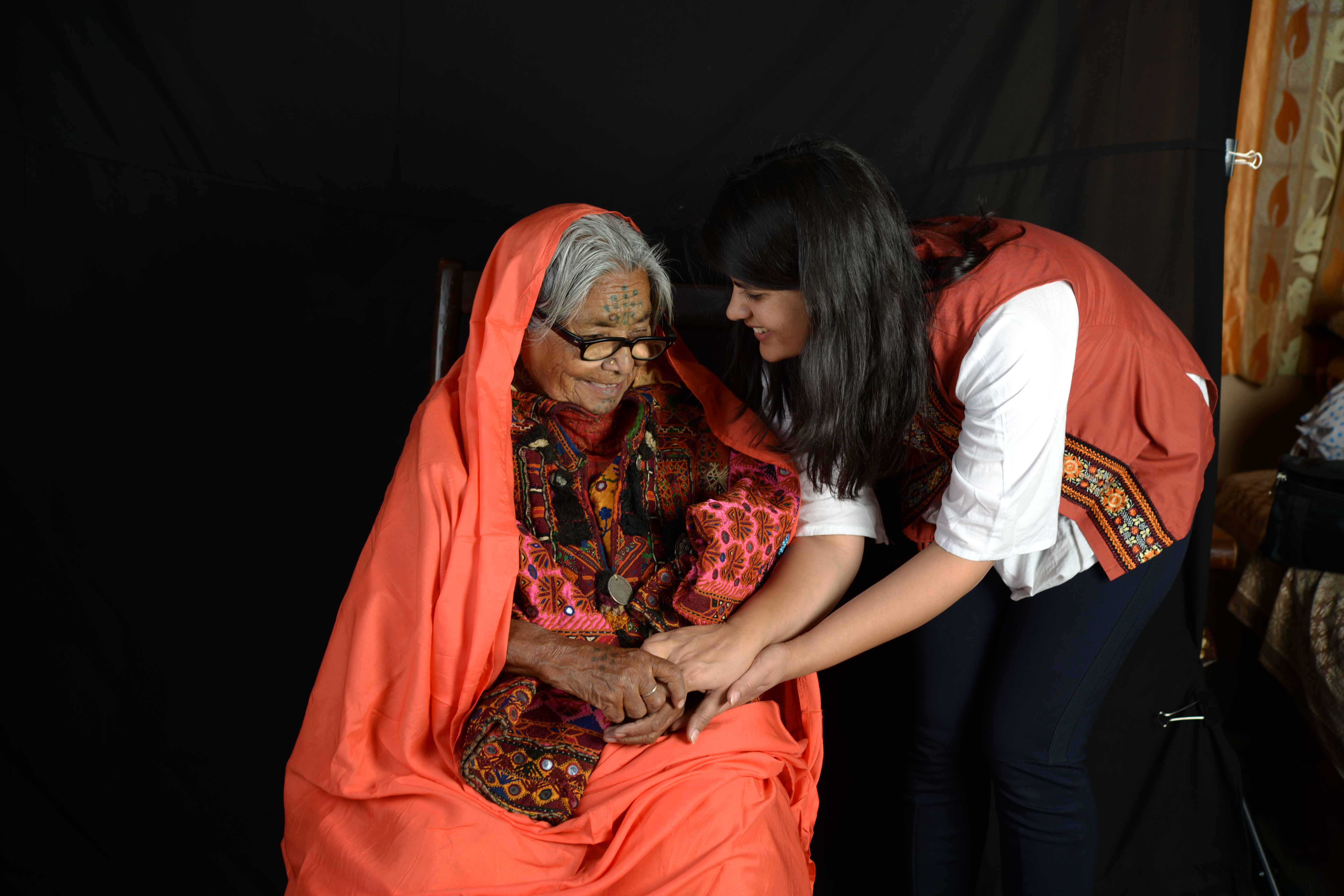
The bond she established with her grandmother and hundreds of other old Pashtun Hindu women, whom she calls her ‘grandmothers’, augmented the story-telling process. Moreover, she also grew up listening to Pashto songs which her grandmother would sing, but couldn’t trace them anywhere.
“Once in Afghanistan, I came across these songs. I compiled about 20 songs together and played them on a speaker for each one of my ‘grandmothers’. After every interview, we presented them a speaker with Pashto songs. The music had a transcending effect on my ‘grandmothers’. Some of them even started crying after listening to it, reminiscing about their lost homeland,” says Shilpi.
In fact, she spent 1.5 years in Kabul, polishing her Pashto and strengthening her research on the Pashtun community while working with an Afghan-American company. “This helped me learn the Pashto script, which my community back home didn’t know,” she says.
So, what is ‘Sheenkhalai’? The literal translation of ‘Sheenkhalai’ is Blue Skin. “An intriguing feature of my ancestors’ appearance was that they had permanent tattoos on their faces and hands. Back in their hometown, my ‘grandmothers’ used to make tattoos on each other’s faces, to enhance their appearances. These were considered beauty marks, but once they moved to India, they were derided and looked down upon because they adorned these unique tattoos,” says Shilpi.
In fact, her own grandmother started to cover her face. Shy around outsiders, her grandmother feared being shunned for the tribal tattoos she adorned. Following Partition, around 400-500 Pashtun Hindus were resettled in Uniara (130 km from Jaipur), Chittorgarh and Punjab.
By 1965, they started shifting to Jaipur (Shilpi was herself born and raised in Jaipur) and other parts of the country, where they had a hard time finding rented accommodation, while others weren’t entirely welcomed even though they were Hindu.
Consequently, many of them found comfort in hiding their Pashtun identity, carrying themselves as Pakistani-Hindu women dressed in saris and salwar suits, while shunning their traditional Kakrai Kameez. They even spoke the local language but would teach Pashto to their children.

The Kakria Kameez is an intricate hand embroidered dress which takes about 1-1.5 years to complete. Shilpi and her community of like-minded individuals from The Open Space Society (TOSS), a film school in Jaipur she co-founded, recovered shreds and parts of these old dresses.
They are restoring them as part of TOSS’ Sheenkhalai Art Project. It’s been two years and they have restored approximately 14 dresses. They have also made a photo series with all her ‘grandmothers’ wearing these old, now restored Kakria Kameez and the expressions on their faces.
“These photos depict a boundless joy. It has given them a way to reconnect with their past and provide closure to their life journey,” she says.
Nonetheless, whenever she would conduct interviews with her ‘grandmothers’ for the documentary, any mention of the Kakria Kameez would bring tears to their face.
“After settling in India my grandmother’s clothing also became a point of contention amongst the people here. As a result, they started wearing clothes similar to that of their neighbours. They gave up a very important part of their culture to blend into the cultural fabric of their new land and sold their old Kakria Kameez for money to make ends meet.”
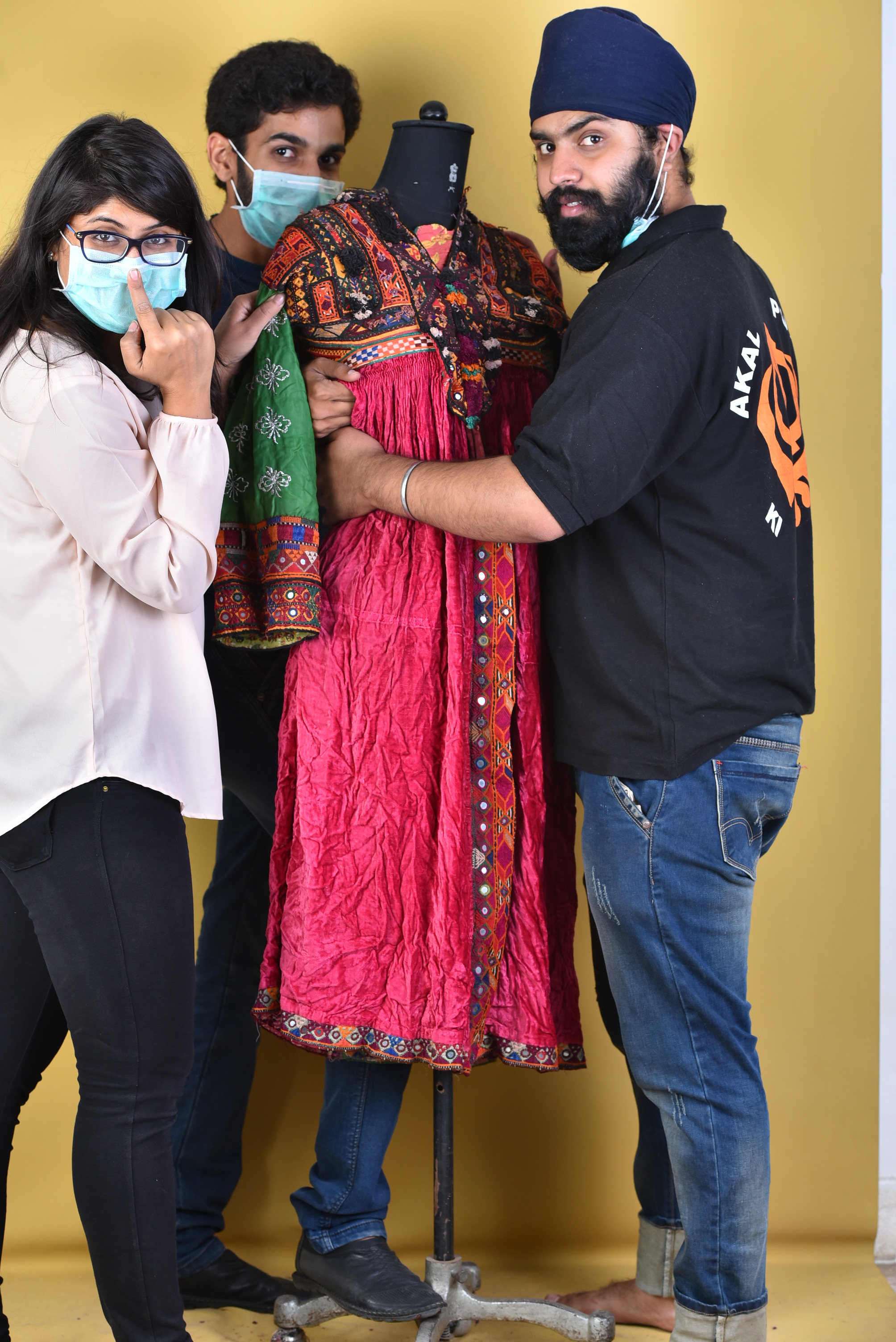
However, the most enduring memory of the project was how it reconnected people to not just their roots, but friends and family from either side of the border.
During her research for the documentary, she was interviewed by Voice of America in Washington DC, which reportedly went viral. Following the interview, many people got in touch with her and offered their assistance for this film. During the course of one such interaction, she got to know of Khursheed Jogezai, a resident of Quetta who promised to connect Shilpi to her ancestral land.
Since she couldn’t shoot in Quetta, Khursheed helped her with the shoot. He sent people to meet her ancestor’s neighbour.
“I got some footage from Maikhtar (Quetta) from Khursheed. While showing it to my one of my ‘grandmothers’, she identified the house in the footage as her relative’s. This made such an impression on me and my community, to see the implication of my work. The past that my ancestors had left, its memories were coming alive and were being celebrated,” she says.
One day she received a video online, which was an interview with an old villager in Maikhter, who recalled his neighbour Prakash and his two daughters. According to the old man, Prakash and his family left one night in a great hurry without ever coming back. Using the network of contacts she had built in the Pashtun Hindu community, Shilpi was able to trace the family back to Rajasthan.
If this wasn’t enough, Shilpi received ultimate validation when former Afghanistan President Hamid Karzai, a Pashtun himself, inaugurated the Sheenkhalai Art Project—a curation of photos, old dresses, jewellery and songs—during the Jaipur Literature Festival earlier this year.
“Hamid Karzai spoke to my elders in Pashto and said that they belonged to the Kakrai community of Afghanistan and should be proud of their cultural heritage,” says Shilpi.
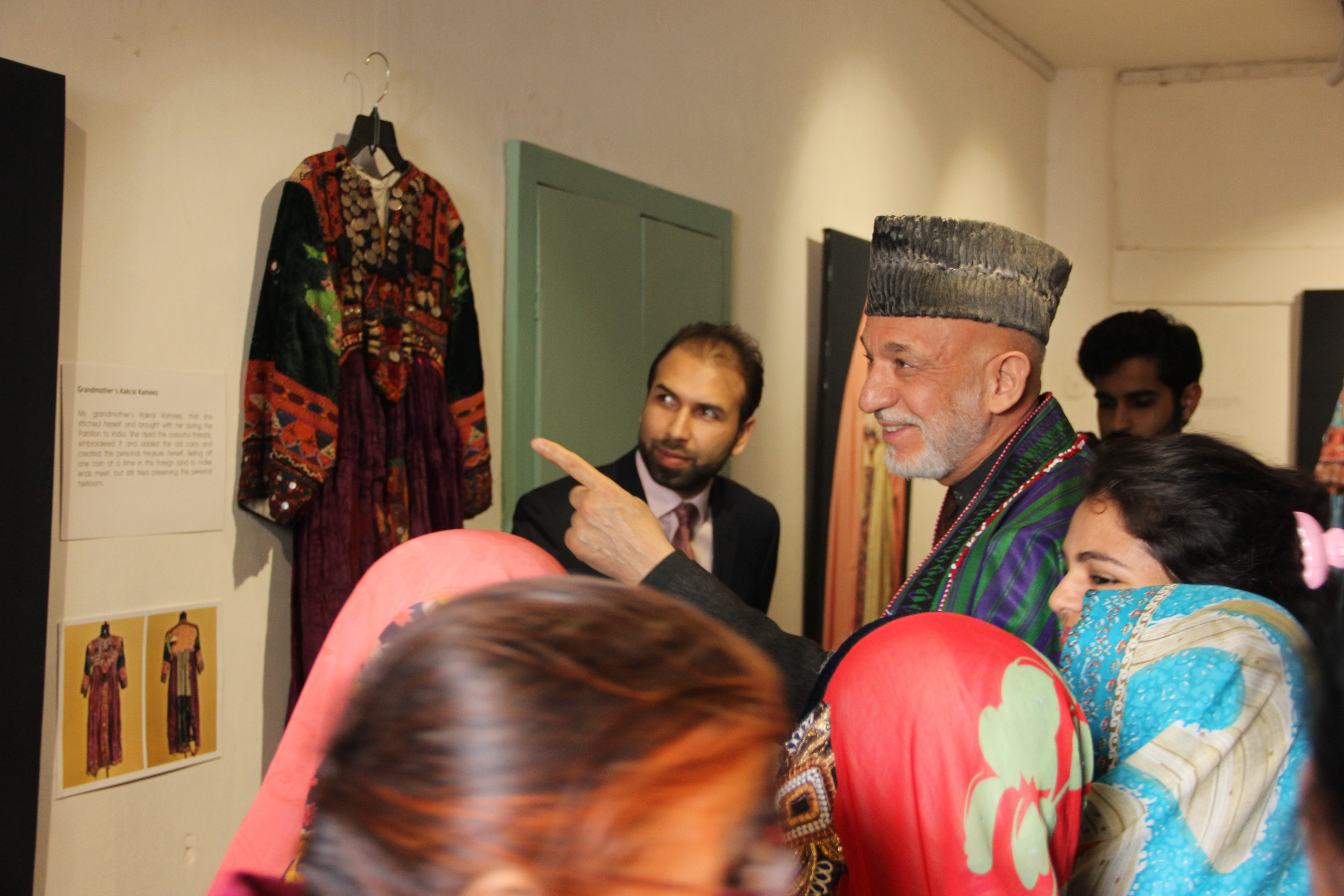
Speaking to The Hindu, Karzai said, “Hearing women singing these old songs is a very special experience. This was them asserting their identity, asserting that no force, or separation or partition can destroy this.” In fact, he went onto state that despite the Taliban, the Afghan people want them back. “Even just after I took over as President, one of my oldest teachers told me our Hindus and Sikhs have suffered more than the Muslims of Afghanistan. He wanted me to bring them back.”
Also Read: Kozhikode to China: IIT Prof Unearths 700-YO Link That Will Blow Your Mind!
What is the message Shilpi wants to convey through this documentary?
“The message that this film speaks out and loudly so is that one shouldn’t shirk away from embracing their identity and we as people need to be more accommodative of the others around us, be it other religion, caste, culture. The world is slowly turning into a globalised culture and boundaries are disappearing and we need to be very cognizant of that,” she says.
Despite all her accomplishments, Shilpi isn’t quite done yet. She is planning to open a ‘Partition Archive’, consisting of documentation, research and literature related to this film for public viewing, study and further research.
Through the film, Shilpi has not only traced back her roots but also helped bring closure to her grandmothers and hundreds of other Pashtun Hindus living in India who have not found the opportunity to express their cultural heritage.
“My community has become more conscious and curious about their culture. We are now witnessing healthy signs of revival, in the form of traditional Pashto songs being played during weddings. The new generation is taking pride in their identity, which is a very positive message this documentary has evoked,” she says.
(Edited by Vinayak Hegde)
Like this story? Or have something to share? Write to us: [email protected], or connect with us on Facebook and Twitter.
This story made me
- 97
- 121
- 89
- 167
Tell Us More
We bring stories straight from the heart of India, to inspire millions and create a wave of impact. Our positive movement is growing bigger everyday, and we would love for you to join it.
Please contribute whatever you can, every little penny helps our team in bringing you more stories that support dreams and spread hope.






